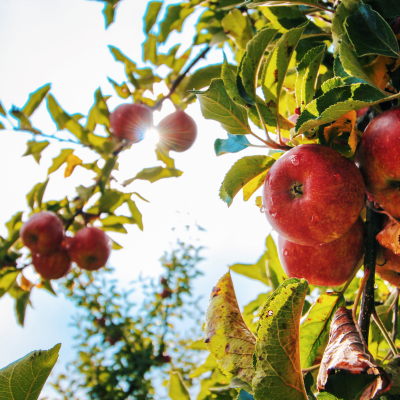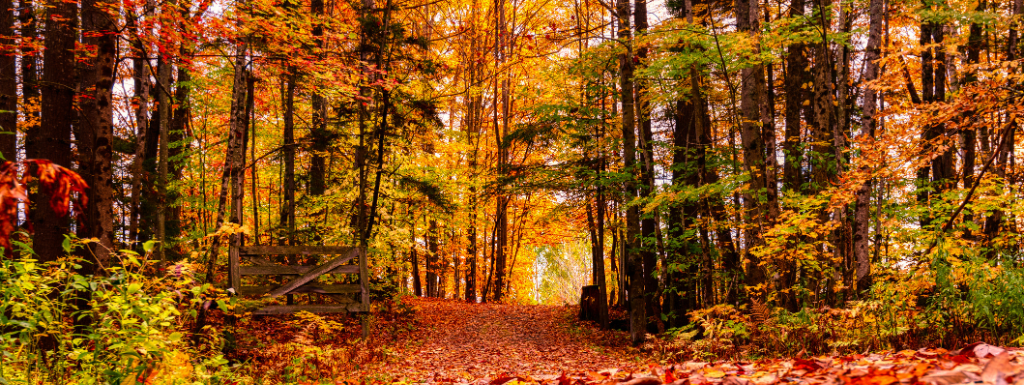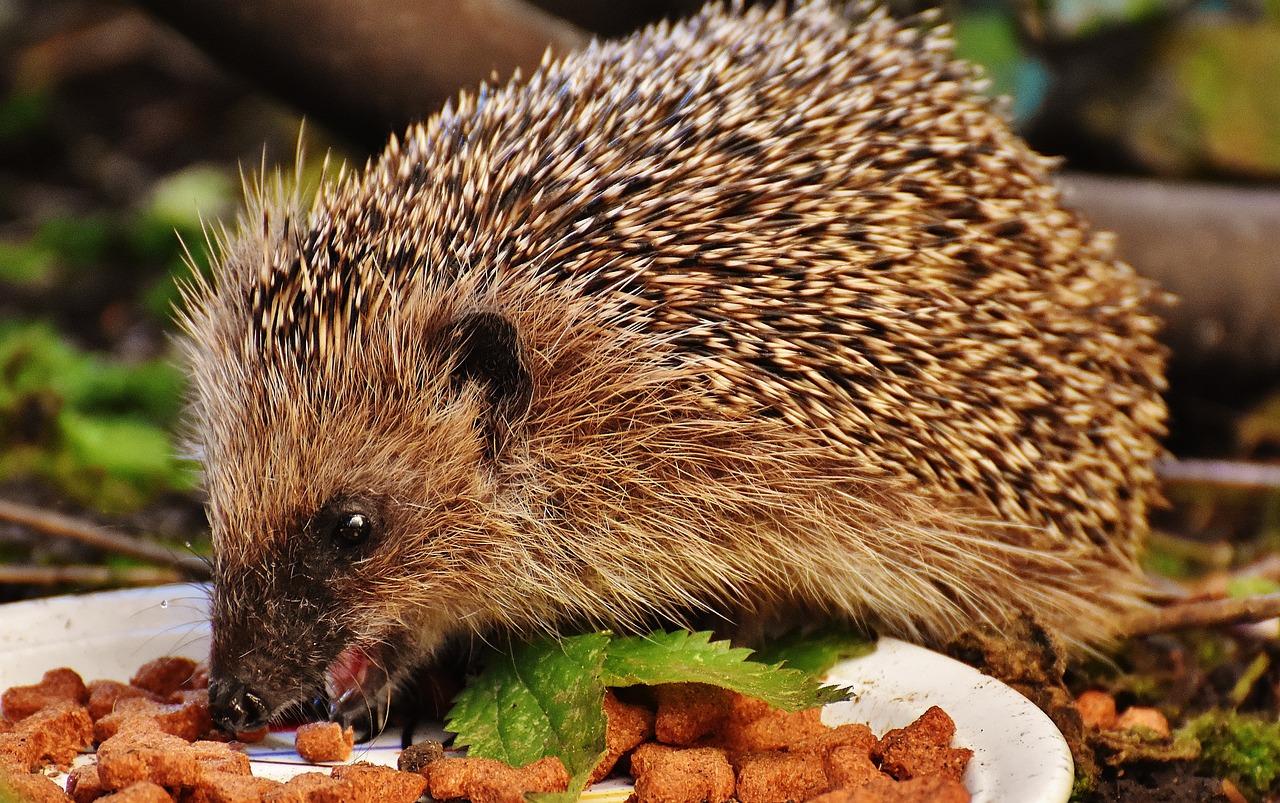Connect with nature throughout the year
Every month will have a different theme and we will be promoting resources and activities on this page as well as publicising related projects and events.
Spending quality time with nature can reduce anxiety, balance your mood and help you feel more positive. Take a moment to notice nature in your daily life. You might be surprised by what you see on your daily walk or in your garden.
October's Theme: Apples, Nature and Wellbeing
National Apple Day: Tuesday 21 October 2025

Celebrate national Apple Day with your friends or family by simply using local apples to cook a fruit pie, crumble or make delicious apple chips. Apple chips are a healthy snack – thinly sliced fruit that are lightly sprinkled with cinnamon, then baked until pleasantly crisp.
In 1990, dismayed by the loss of so many traditional orchards and amazed at the 3,000 or so varieties of apples that have been grown over time in the UK, an organisation called Common Ground set out to create a new celebration of our most versatile fruit and the beautiful orchards they come from. It would simply be called ‘Apple Day’ and, since then, Common Ground have worked to extend, support and promote Apple Day events countrywide.
Apple Day is all about living better with nature. It shows how we can have our trees, bees, bats, butterflies, birds and badgers whilst growing good fruit to eat and drink.
If you want to get involved in helping pollinators and growing food, contact your local community garden or orchard - see our community gardens section for more information.
September’s Theme: Autumn Wildlife
Take a walk around a wood
 As summer begins to make way for autumn the nature around us adapts to its changing surroundings. The autumn the woods come alive with colour, thanks to beautiful autumn leaves. So, why not venture out and enjoy a gentle stroll among the rich reds, warm oranges and bright yellows of the trees around you? Pull on your wellies, grab a cosy scarf and head out to your local wood with family and friends.
As summer begins to make way for autumn the nature around us adapts to its changing surroundings. The autumn the woods come alive with colour, thanks to beautiful autumn leaves. So, why not venture out and enjoy a gentle stroll among the rich reds, warm oranges and bright yellows of the trees around you? Pull on your wellies, grab a cosy scarf and head out to your local wood with family and friends.
Autumn outdoor activities for kids
Bird migration
For many plants, insects and some mammals, Autumn is a time of slowing down, of shutting down. It’s all about changing where and how they live in preparation for the great annual emergency - winter.
Bird migration is one of the wonders of the natural world. For many birds it’s about arrivals and departures, some flying south in pursuit of food and warmth, while others arrive from the Arctic for a mellower winter.
Help the wildlife
At this time of year, many of us pack up our gardening tools and head indoors, paying little attention to our outdoor space again until spring. However, even in the depths of winter, our gardens should be bustling with life providing a lifeline for many of our native species, especially if we make a few easy adjustments that will make all the difference to the wildlife on our doorstep during the colder months. If you want to help wildlife get through the winter, discover 10 simple things you can do.
Take action for wildlife at home
The Berks, Bucks and Oxfordshire Wildlife Trust (BBOWT)
BBOWT tells you how to help wildlife in your garden including providing a regular supply of water.
RSPB
The RSPB bird identifier lists 405 species of birds found in the UK, including some rare overseas visitors. You can also Identify a bird with the RSPB bird song identifier.
The RSPB gives you ideas for activities and will help you to plan simple tasks ‘perfect for your patch’ whether it is a window box, outdoor space or garden.
Woodland Trust
The Woodland Trust has gathered some ideas to help you and your family enjoy a summer visit to a wood near you. Woodland Trust woods in Cherwell include:
Thames Valley Environmental Records Centre
You can also share your wildlife sightings with staff at the Thames Valley Environmental Records Centre (TVERC) who will add them to their database and make sure your records are used in local-decision making.
Oxfordshire Mammal Group
Find out about a variety of mammals in the County including the hedgehog. In Oxfordshire, hedgehogs (listed as European hedgehog) are widespread but declining and known records can be seen on this County map.
Kirtlington Hedgehog Street
 Kirtlington Hedgehog Street is connecting gardens in the village to give hedgehogs enough space to breed and to help keep them off the roads. Why don’t you create a hedgehog street in your local area?
Kirtlington Hedgehog Street is connecting gardens in the village to give hedgehogs enough space to breed and to help keep them off the roads. Why don’t you create a hedgehog street in your local area?
More information about hedgehogs is available from the British Hedgehog Preservation Society.
Habitat Heroes
With natural nesting sites in decline, adding a nestbox to your garden can make all the difference to your local birds - see how to build a bird box. Always get an adult to help with tools!
Make your garden hedgehog friendly and watch out for visitors. Why not talk to your neighbours about creating a hedgehog hole in your garden fence or build a hedgehog home? Why not create a hedgehog highway like Kidlington?
Five Ways to Wild Wellbeing
Building these five actions into your everyday life can improve your mental and physical health:
- Take notice of the everyday wildness on your doorstep. Then contribute to Nature’s Calendar
- Connect with the people around you, share your wildlife experiences (see 3 Community Gardens section above)
- Learn something new outdoors - read the spotter sheets and nature activities
- Be active - go outside for a walk or explore your local wild places (download the Go Jauntly walking app)
- Give - turn your garden or community space into a haven for wildlife (see Take action for wildlife at home tab)

